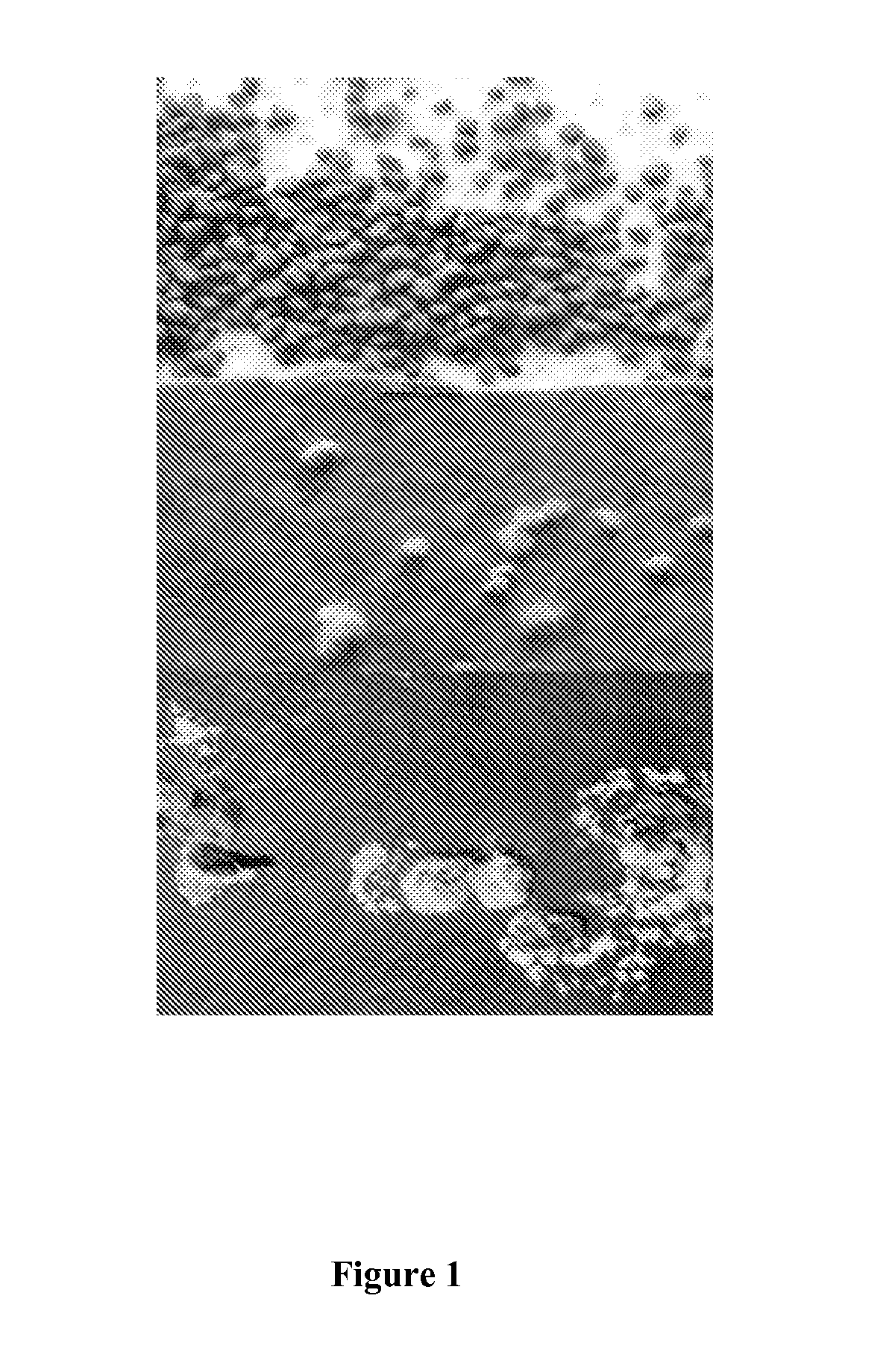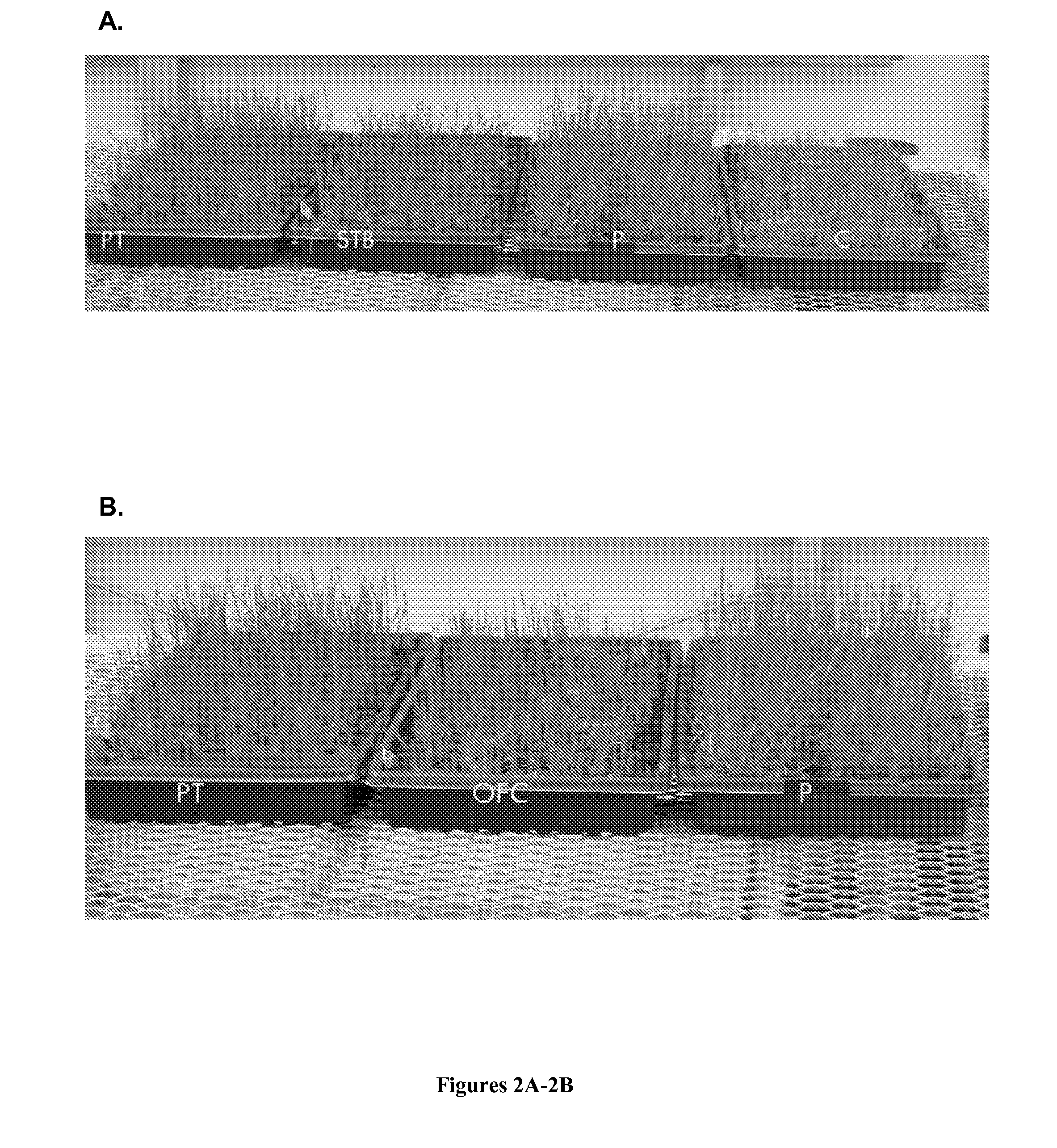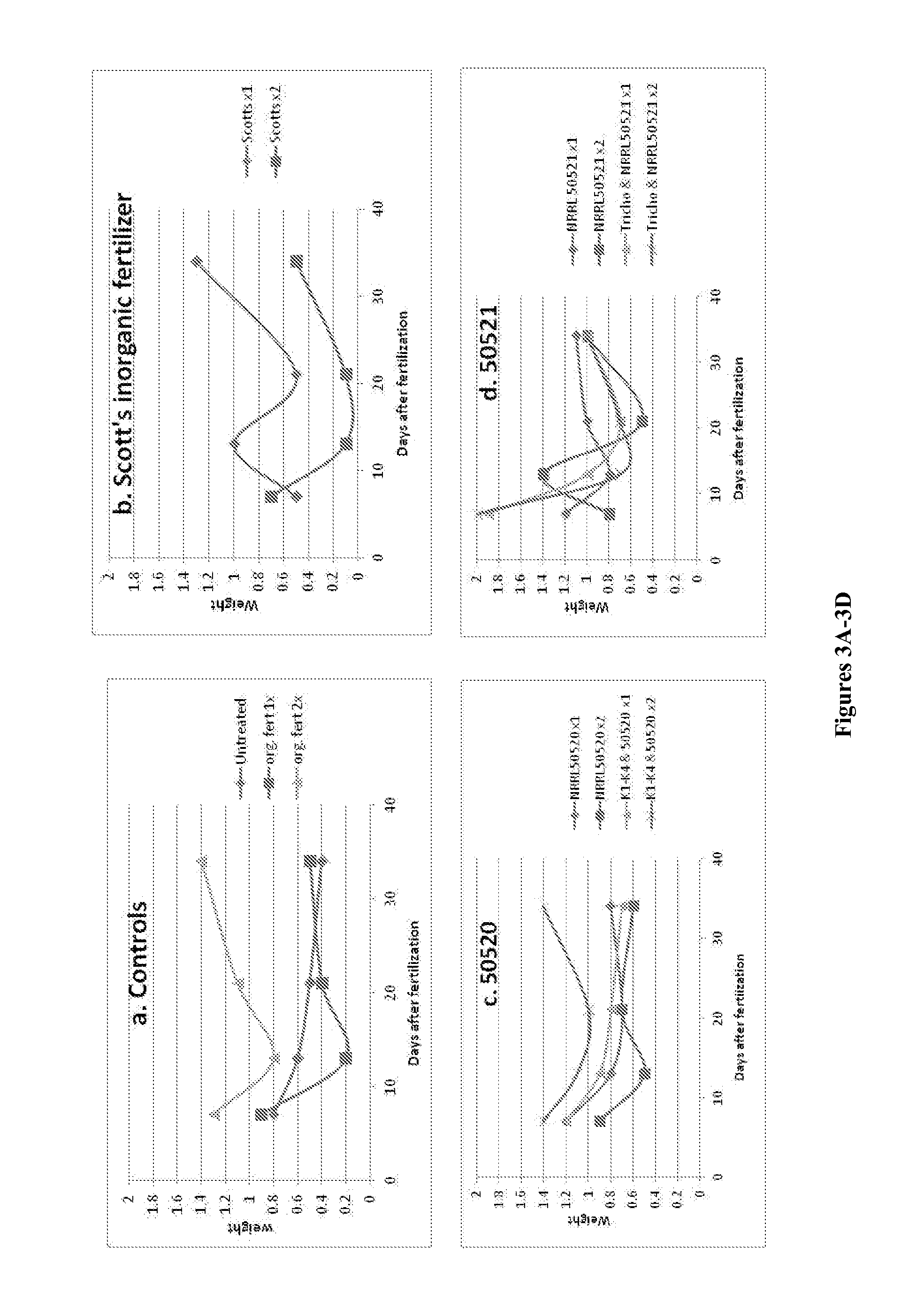Highly efficient organic fertilizer and components thereof
a high-efficiency, organic technology, applied in the direction of calcium fertilisers, ammonium orthophosphate fertilisers, magnesium fertilisers, etc., can solve the problems of reduced nitrogen fertilizer application rate, poor water quality in the bay and the water, and plant use only about 33% of the total nitrogen fertilizer applied, etc., to achieve excellent natural nutrient for plants, easy to detect by smell, and easy to use as fertilizer
- Summary
- Abstract
- Description
- Claims
- Application Information
AI Technical Summary
Benefits of technology
Problems solved by technology
Method used
Image
Examples
example 1
Isolation of Effective Microorganisms that Degrade Waste Proteins
[0084]One of the most widespread proteins present in agricultural wastes is keratin. This is the structural component of hair, feathers and other similar substances. While keratin is generally degraded slowly in soil or elsewhere, there are microbes that degrade this substrate relatively rapidly.
[0085]The organisms of the present invention can be grown in liquid fermentation and ammonia and amino acids will be released. For use with the NRRL strains described herein, an additional nutrient may be used, such as tripticase soy broth (Difco Products). Feather meal at 1 to 10% w / v is added to the tripticase soy broth in water and the mixture is sterilized by autoclaving. When the organisms are added to this sterile medium, feather meal is degraded. The release of ammonia from feather meal creates an alkaline environment. Since ammonia at a high pH is strongly volatile, the presence of this material is easily detected by sm...
example 2
Identification of the Keratin-Degrading Fungi and Bacteria
[0089]The fungi identified in Example 1, supra, were sent to the USDA type culture collection for deposit in their patent collection. The strains were designated as NRRL B-50520, NRRL B-50521, and NRRL B-50522 for the green-, brown-, and white-spored strains, respectively. These fungi were identified as Trichoderma viride (NRRL B-50520), and Scopulariopsis brevicaulis (NRRL B-50521 and NRRL B-50522 are both isolates of this fungi). Both species have penicillate conidiophores, but subtle differences in the arrangements of the conidiophores clearly place them in their respective genera. The ITS regions of each of the isolates were also sequenced and assessed by GenBank BLAST queries. As a result, their identity is confirmed as follows:[0090]NRRL B-50520—Trichoderma viride [0091]NRRL B-50521—Scopulariopsis brevicaulis [0092]NRRL B-50522—Scopulariopsis brevicaulis
[0093]Trichoderma viride has a very low risk profile. The US Envir...
example 3
Methods of Production of Useful Formulations
[0095]Feather meal is a coarse brown powder. Dry fertilizers for use in many applications need to be applied as granules through drop or rotary dispersal systems. Therefore, a method was developed for making a useful granule. A method for solidifying and production of granules with dimensions of 2-5 mm in diameter was required. The initial granule was prepared by adding sufficient water to the feather powder to produce a slurry and then dissolving in this slurry gelatin to a final concentration of about 7% relative to feather powder. This material was spread in a sheet and dried and the result was a hard brown sheet. This was then ground and sieved to provide particles of the desired size. It will be appreciated that a similar composition can be extruded and dried to give appropriately sized particles. Similarly, these mixtures can also be used in pelleting equipment, followed by appropriate sizing.
[0096]The granules thus produced do not c...
PUM
| Property | Measurement | Unit |
|---|---|---|
| wt % | aaaaa | aaaaa |
| diameter | aaaaa | aaaaa |
| diameter | aaaaa | aaaaa |
Abstract
Description
Claims
Application Information
 Login to View More
Login to View More - R&D
- Intellectual Property
- Life Sciences
- Materials
- Tech Scout
- Unparalleled Data Quality
- Higher Quality Content
- 60% Fewer Hallucinations
Browse by: Latest US Patents, China's latest patents, Technical Efficacy Thesaurus, Application Domain, Technology Topic, Popular Technical Reports.
© 2025 PatSnap. All rights reserved.Legal|Privacy policy|Modern Slavery Act Transparency Statement|Sitemap|About US| Contact US: help@patsnap.com



